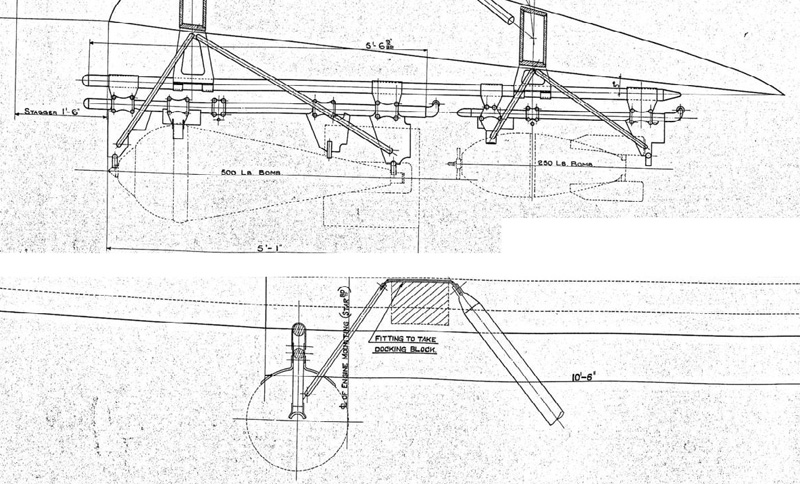Hello, this is my first posting here and might be back with a few more questions like this as I am creating illustrations for a book on interwar aircraft.
In this instance I have this unproduced Supermarine drawing from 1923 showing a tubular skeleton bomb carrier with a 250lb and 500lb bomb attached. Can anyone identify the two bombs and the bomb carriers?

I have the Putnam Armament of British Aircraft and also the Air Ministry Details of Aerial Bombs 1918 (IWM reprint). The latter includes a drawing of the mark 1 250lb bomb but it states it is already obsolete (1918) - indeed the Supermarine drawings shows a slightly different bomb and fins.
There is no 500lb bomb listed in the book but there is a mark 1 520lb bomb which matches quite closely that shown in the Supermarine drawing. However again it states it is already obsolete by 1918 - and this drawing is from 1923.
Any ideas on identifying and how I might find further reference on the two bombs and bomb carrier would be most welcome. Even finding modern day existiing examples of the tubular bomb carrier for reference has proven quite difficult.
In this instance I have this unproduced Supermarine drawing from 1923 showing a tubular skeleton bomb carrier with a 250lb and 500lb bomb attached. Can anyone identify the two bombs and the bomb carriers?

I have the Putnam Armament of British Aircraft and also the Air Ministry Details of Aerial Bombs 1918 (IWM reprint). The latter includes a drawing of the mark 1 250lb bomb but it states it is already obsolete (1918) - indeed the Supermarine drawings shows a slightly different bomb and fins.
There is no 500lb bomb listed in the book but there is a mark 1 520lb bomb which matches quite closely that shown in the Supermarine drawing. However again it states it is already obsolete by 1918 - and this drawing is from 1923.
Any ideas on identifying and how I might find further reference on the two bombs and bomb carrier would be most welcome. Even finding modern day existiing examples of the tubular bomb carrier for reference has proven quite difficult.



